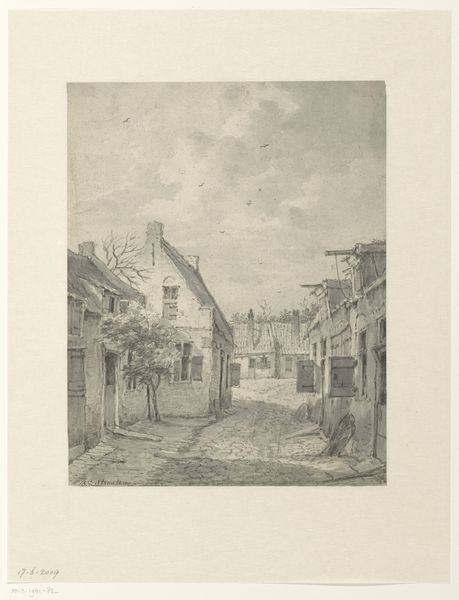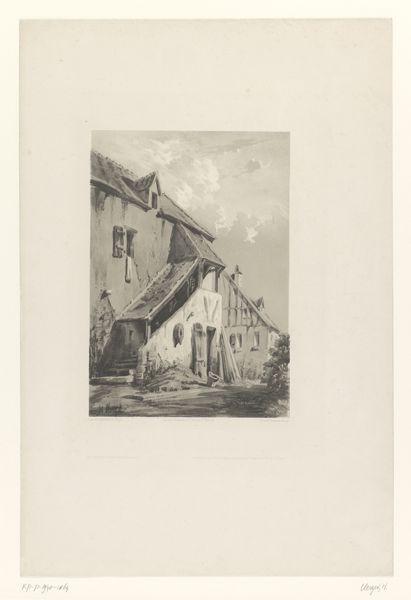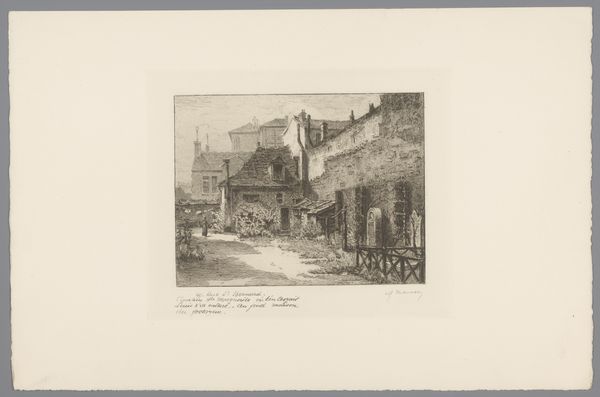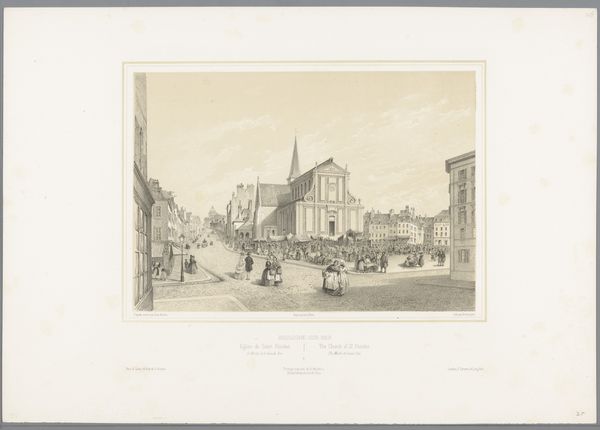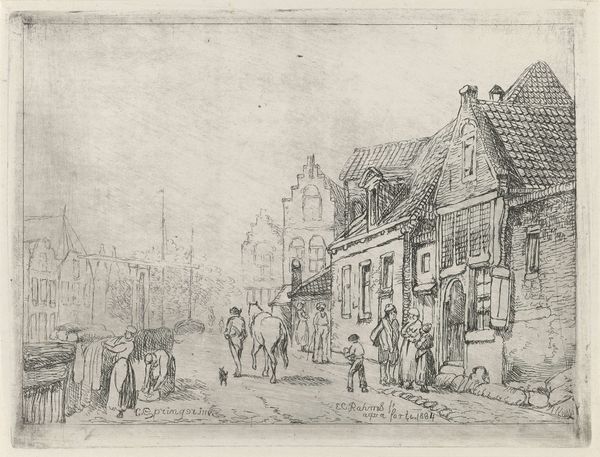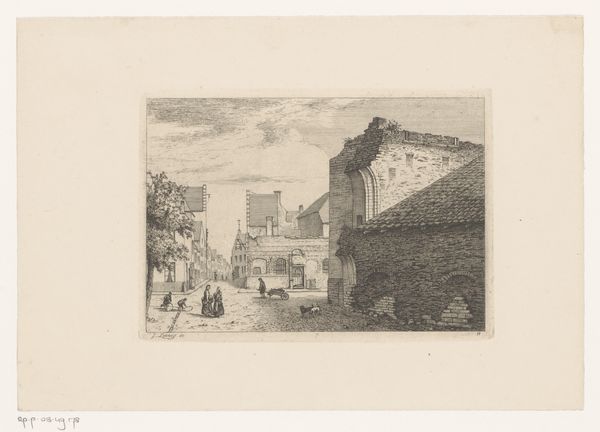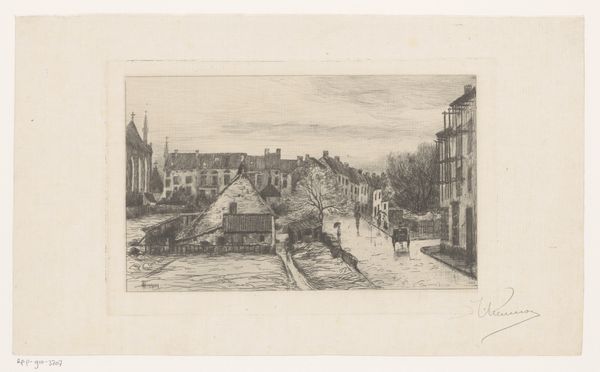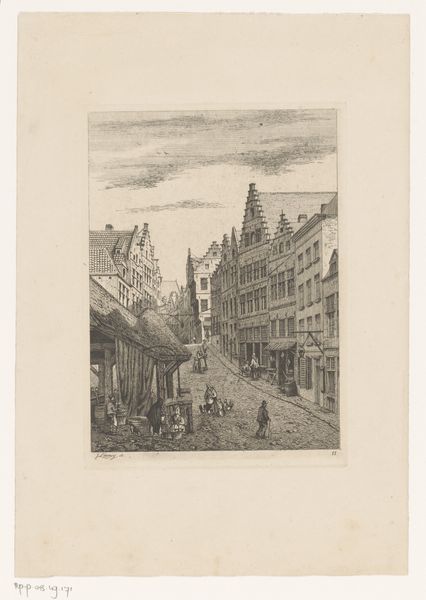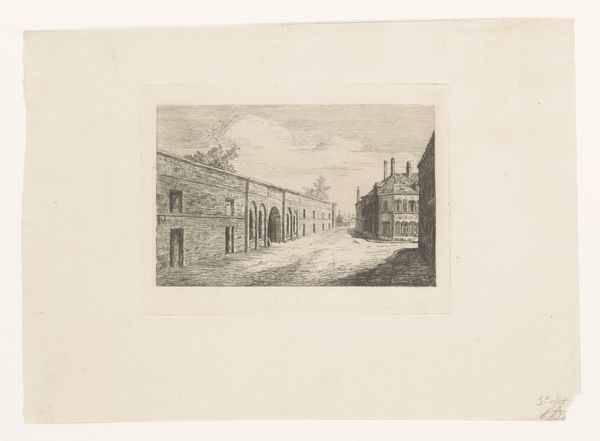
print, engraving
#
dutch-golden-age
# print
#
landscape
#
cityscape
#
genre-painting
#
engraving
#
realism
Dimensions: height 255 mm, width 345 mm
Copyright: Rijks Museum: Open Domain
This is Frederik Hendrik Weissenbruch's "Vrouwen in dorpsstraat," made using etching and paper. Looking closely, you'll notice the intricate network of lines creating light and shadow, a hallmark of the etching process. Weissenbruch masterfully manipulated the etching needle to define the architectural details of the village street, from the rough texture of the cobblestones to the weathered surfaces of the buildings. The figures of the women are rendered with a similar attention to detail, their forms emerging from the dense network of lines. The buildings look quite old and used. Etching, with its reliance on skilled handwork and chemical processes, was a widespread form of image-making in the 19th century, existing somewhere between the unique gesture of painting and the mechanical reproducibility of industrial printing. It’s fascinating to consider how the labor-intensive nature of etching might have informed Weissenbruch’s perspective. The medium mirrors the everyday lives of the people he depicted, elevated through his artistic skill. It blurs the boundaries between labor, artistry, and social observation.
Comments
No comments
Be the first to comment and join the conversation on the ultimate creative platform.
